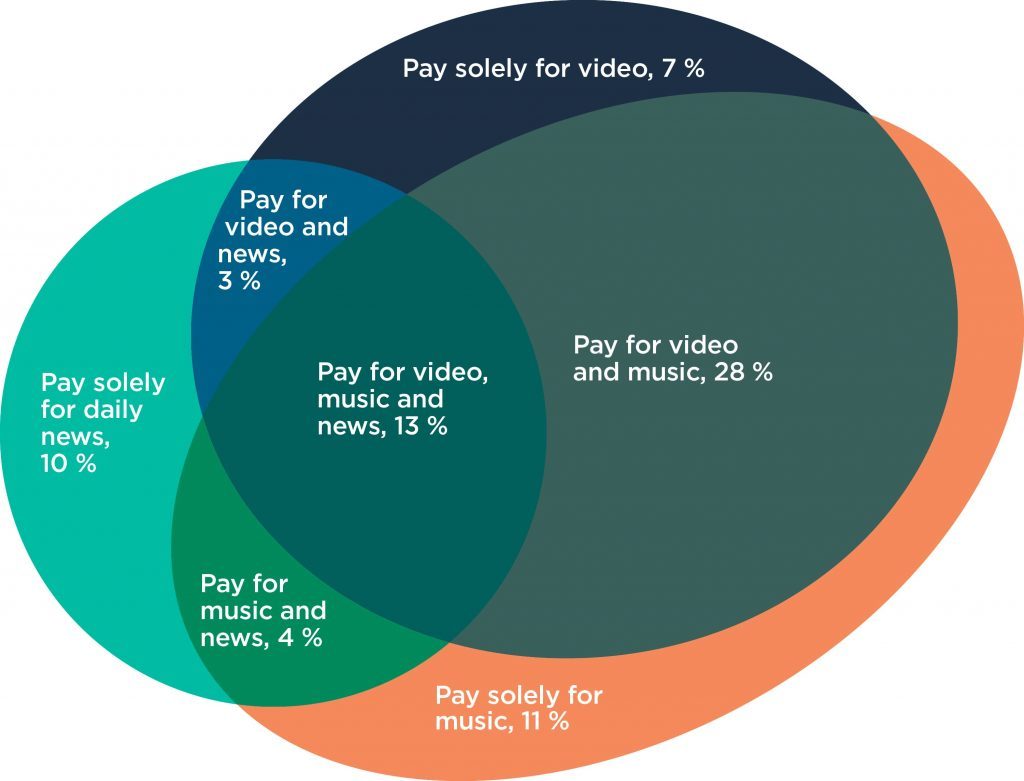More people are connecting more often to the internet in Sweden and fewer are left in digital exclusion. In many charts in this report, the bars are almost at 100 percent. 100 percent of those under the age of 26 watch YouTube. Almost everyone who is home with children shop online, and almost all students google, just to give some examples.
At the same time, the question arises over which people belong to the shrinking crowd who do not connect daily. Because the divide does not actually run between those who use the internet and those who don’t use it at all. Even those who use the internet sometimes or a few times a week feel much less involved in digital society than those who connect daily. In light of this, we will let Swedes and the Internet 2018 shine an extra spotlight on seldom- or non-users.
Five years ago, we established that a million Swedes were not connected. Today that number is half as many. So another 600,000 Swedes use the internet, but do it more seldom than every day. This means that 1.1 million Swedes do not use the internet at all or do it less often than every day. For specific services, non-users are even greater. For example, 1.5 million Swedes do not have a mobile BankID. Another example is that every other person born in the 1940s does not use Facebook. Those who invite people of the same age to their 70th birthday party should therefore also send, for example, an additional email.
Age is the clearest link to those who do not connect daily. Three-fourths of those who do not are over the age of 65. However, there are more factors behind the 1.1 million total of people who do not use the internet daily or at all. They are mostly women, have lower household income, and live more often in rural areas. They are more often of lower education and work in industries dominated by blue-collar workers rather than white-collar. They are also more often single, unemployed, or on sick leave.
At the same time, there are clear signs in the statistics that those who begin to use the internet or different services online do not quit. Those who do not currently use the internet at all have rarely tried it. When we look at how different generations use different services on the internet, we can also note that few people stop using specific services once they have begun. Once on Facebook, always on Facebook?
Another way to look at digital exclusion is to see how far behind a certain generation is when it comes to a specific service. Today, almost just as many people born in the 1940s have internet on their phone as those born in the 1970s had six years ago, in 2012. And those born in the 1940s currently feel as involved in the digital society that those born in the 1960s did two years ago. The 1940s generation are increasingly connected in different ways. In fact, those in the oldest group account for the biggest increase in many cases in the statistics.
In all, we estimate that more and more people will connect and use different services in the future. We have hardly reached the ceiling. It is however important to keep in mind that those who are starting to connect now are beginners. Do you remember the first time you sent an email, navigated the internet on your phone, posted to Instagram or shopped online?
Those planning tomorrow’s society need not only to take into account whether a particular target audience uses the internet or not, but also how often they do and how experienced the group is.
Access to fiber slows down
After the increase of fiber-connected households at 7 and 12 percentage points in the recent years, the expansion of Sweden’s fiber network to households seems to have slowed down. Only two additional percentage points had access to fiber in the household between 2017 and 2018.
The overall total who have access to the internet at home has increased, however, especially among the eldest, who are now catching up with the rest of the population. Those who have access to the internet in their homes however, do not necessarily use it. Although access to the internet in the home has increased from 95 to 98 percent, the use still stands at 94 percent in this year’s survey.
A majority blur the line between work and free time
Many use the internet as a tool to allow work life and private life to merge together even more. This means that we on one hand use our free time to work online as well as reading emails while on holiday, and on the other hand we use the internet for private matters at work.
Not surprisingly, the industry where one works plays a big role in how work and private life are mixed with help of the internet. IT and communication industries as well as the finance industry are where most work on their free time via the internet and also use the internet in private matters during work time. Medical care and transport industries are the industries that mix these the least.
Many use several messaging services
What do we use most to communicate; email, Skype, Whatsapp or Facebook Messenger? Answer: all of them. Swedish internet users are not content with just one messenger service to communicate. On average, those responding use five out of the eight messenger services that Swedes and the Internet asked about. Almost every other person uses more than five messenger services.
Social media is growing – but Facebook activities are slowing down
The use of social media continues to grow from already high levels. The largest of all is Facebook, followed by Instagram and Snapchat. However, there are signs that Facebook cannot rest easy and proclaim eternal victory. For on deeper examination, there are parts of the service that not only stand still but are also decreasing. The daily Facebook usage is the same and although it increases among the older groups, it decreases among those up to age 35. The largest decrease for Facebook use is seen among specific activities. Fewer write posts and add photos, participate in groups and events as well as sharing others’ posts. Of the activities on Facebook that Swedes and the Internet measures, it is only the Facebook messenger service that has not decreased. Instagram is growing significantly faster than Facebook although it should take a few years before Instagram catches up if this development continues.
Every fourth infant uses the internet
This year, for the first time, we are measuring how children under two years old are using the internet. When we ask their parents, one in four with an infant between 0-12 months reported that their child uses the internet. Among one-year olds it’s closer to two out of every five that use the internet. From two years of age, more than half of children use the internet every day. Looking at videos is on top of the list, so it’s reasonable to believe that the tablet has replaced the TV.
Popular services increase willingness to pay for content
For the first time, more than half of people say that they pay for movies online and just as many say they pay for music. Netflix and on-demand play channels are growing at the expense of offline TV. Among the Swedes who pay for music, almost all use Spotify. It seems to be the availability of these popular services that have increased the growth of payment willingness.
When it comes to paying for subscriptions of a newspaper, the development is not as clear. Certainly the digital share is increasing, but not enough to compensate for the large decrease in subscribing to a physical paper.

Music, podcasts, radio and audiobooks – the internet takes over our headphones
Listening to content from the internet is increasing, whether it is music, podcasts, internet radio or audio books. Although much of this content has been available on the internet for many years, consumption has increased during the last few years. Both podcasts and online radio is reaching more than half of internet users. Among the young, podcasts are more common than radio and they listen to a lot of music from the internet every day.
At the same time, there are changes in the behavior of those who are starting to listen to podcasts and online radio instead of listening to traditional radio, as well as for those who watch play channels and streaming services like Netflix instead of watching traditional TV. The traditional media consumption is largely a daily activity, but those who switch, for example, their radio to a podcast, or from traditional TV to Netflix, are more likely to consume their media weekly rather than daily. This may be due to the fact that new services encourage a more purposeful follow-up on certain recurring programs and series.
Self-confidence in googling decreases
The public discussion about who actually controls what we see online when we google, for example, seems to have made an impression in the difficulty that we have in finding the right search words. A healthy skepticism maybe, but fewer indicate that they think it is easy to find search words when they are looking up something online.
These are some of the conclusions in this year’s survey about Swedes and the Internet, but there is much more. For example, for the first time we have investigated how much Wikipedia, Google Search and Flashback are being used in Sweden.
Also new for this year, we have observed how a number of selected generations have developed on the internet during the past few years. We can now give the answer to the question of “when did those born in the 1970s start to pay for music on the internet?” and “Is it possible to follow a person born in the 1940s on Instagram?”
Happy reading!
Jannike Tillå
The Swedish Internet Foundation
Facts about the survey and The Swedish Internet Foundation:
We at The Swedish Internet Foundation are responsible for the .se domain and operation of the .nu domain. It can be described as the core of the Swedish internet. We are an independent non-profit organization that works for a positive development of the internet. We promote research, education and teaching with a focus on the internet. With this survey, Swedes and the Internet 2018, we want to contribute with facts and insights on how the use of the internet is Sweden is developing. We want to make it possible for digitalization of the Swedish society and business to happen on a well-informed basis.
